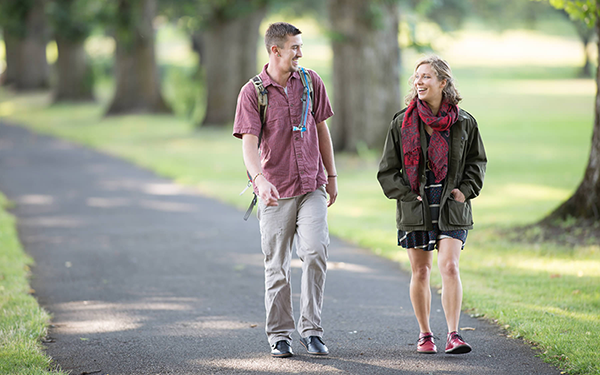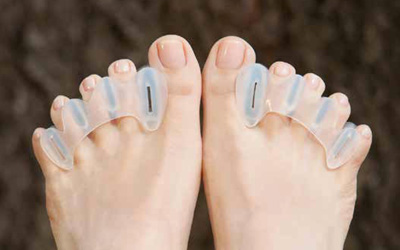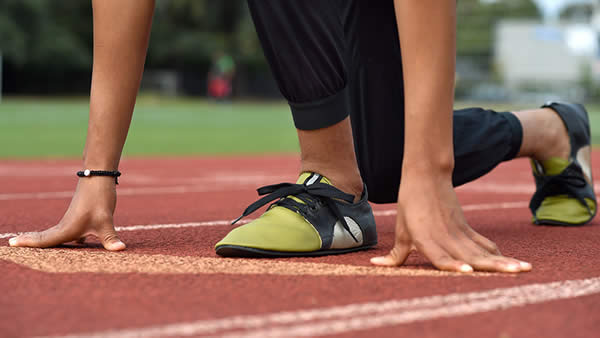
Loading...
Checkout using your account
Checkout as a new customer
Creating an account has many benefits:
- See order and shipping status
- Track order history
- Check out faster
-
Crafted with Love Here in the USA
Every Softstar shoe is designed and handcrafted at our workshop in Philomath, Oregon. See how our shoes are made.
-
Enjoy Free Shipping & Easy Returns
Return any brand new shoe for any reason for a refund, even if you customize with your own special colors! Learn more about our shipping options or return policy.
Start Your Journey to Healthy Feet
Transitioning to barefoot shoes can be liberating and beneficial if you do it carefully.
Although people may still debate over the benefits of minimalist shoes and barefoot running, we remain strong advocates for both. So many customers have told us their foot pain disappeared and their cushy orthotics became unnecessary after switching to our barefoot shoes, and it's hard to ignore that kind of response. We constantly hear from curious folks who want to give minimalist footwear a try for a variety of reasons. Some want to treat foot pain naturally, prevent future problems and/or improve their overall health and balance. Others are embracing primal workout techniques like MovNat or Crossfit and find their feet need more freedom of movement. Many people are eager to jump right into it, but there are some things to learn about how to safely transition to barefoot shoes that should be understood before ditching your conventional shoes.
Take it Slow!
The biggest mistake people make when transitioning to barefoot shoes is going too quickly. If you've spent decades walking in highly cushioned shoes with elevated heels, tapered toe boxes and arch supports, then the muscles, ligaments and tendons in your feet have adapted to work in a specific way. Some of them may have not been working much at all and could be very weak (one of the links between conventional shoes and foot pain). Hastily switching to minimalist shoes that engage all of those foot muscles differently can be a shock to your system and may lead to injury. This is true even for experienced runners, who risk stress fractures or other ailments if they skip the process of conditioning their feet before taking on long distances barefoot. Think of it like coming out of a cast after healing from a broken leg and trying to run a marathon the next day—not a good idea! Getting hurt is exactly the opposite of what you're trying to do with minimalist footwear, but taking your time to build up those intricate muscles properly can safely bring you to the benefits of natural foot health. If you're like most of our customers then you may never want to wear conventional shoes again!
So what's the verdict on how to transition to barefoot shoes? The process differs depending on whether you want to wear barefoot shoes casually, for running, or both. In any case, we'll share the advice of some experts in the field.
But first, our disclaimer:
We are shoemakers, not doctors. While we're happy to relay this information from medical professionals, we are not qualified to give medical advice and we make no medical claims or guarantees about results. Softstar is not responsible for any injuries that may occur by following the tips below.
How to Transition to Barefoot Shoes for Casual Everyday Use
If your goal is to wear barefoot shoes as part of your daily routine consisting primarily of walking, standing and sitting, then podiatrist and Correct Toes inventor Dr. Ray McClanahan recommends this two-month plan for a healthy transition:
Basically, you want to start by spending only one hour each day wearing your new shoes or walking barefoot. Each week you increase this time by one hour until you reach the 8-hour mark at the end of two months. At that point, most people should be able to fully switch to barefoot shoes without harm. Some people may be able to progress faster, especially those who already spend time barefoot, but it is recommended to err on the side of caution. If you feel pain then it may be wise to slow down your transition time. You have a whole life of healthy feet ahead of you, so don't rush it!
If you're trying to treat foot pain, then incorporating toe spacers into your transition may help with the process. We're big fans of Correct Toes silicone toe spacers because they treat a wide range of foot conditions by gradually restoring feet that have been malformed by conventional shoes. We're proud to sell these on our website:
How to Transition to Barefoot Shoes for Running
Looking for more athletic endeavors? Physical therapist and barefoot running guru Michael Sandler has a bestselling book on the subject, appropriately titled Barefoot Running. It's full of great advice for making the transition, including tips to improve your running form. This is important since you'll be changing not only your shoes, but also your gait as you will likely switch from a heel strike to a forefoot strike. For your feet, here's what Michael recommends:
- On your first day, begin by running only 200 yards barefoot or in minimal shoes. This may not seem like much, but you'll notice the strain on your feet and calves—you're basically doing calf-raises with every forefoot strike. Ice afterwards if you're sore.
- Skip a day, then add 100 yards to your barefoot/minimal running distance every other day.
- For the first three months only run barefoot/minimal every other day. If you wish to run more then you can spend the rest of your running time in your old shoes/orthotics. As you slowly increase your barefoot/minimal time, you can slowly decrease your time in supportive shoes until you no longer need them.
- Stop running if you feel pain. Rest and heal before continuing.
It is worth noting that Michael also recommends starting fully barefoot or in minimalist shoes, like our Adult Dash RunAmoc, to receive maximum feedback from your feet (as opposed to wearing "transitional" shoes with moderate cushioning) because doing so can help your body respond and achieve the lightest stride. For more tips, visit his website RunBare.
Loading...





Login and Registration Form